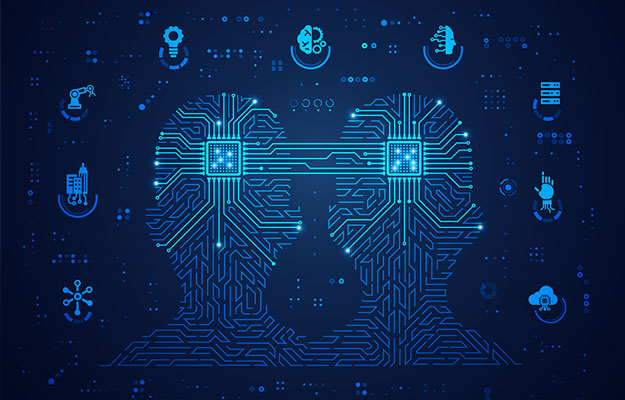
Industry 4.0 refers to the fourth industrial revolution. It includes the further development of manufacturing automation and industrial processes and practices using smart technology.
The Industrial Internet of Things (IIoT) and Machine to Machine communication (M2M) are integrated to automate tasks, improve communication and self-monitor. Digital Twin technology plays a major role in reducing human intervention, remote analysis of infrastructure and problem diagnosis to optimize business performance.

Digital Twins enable the visualization of infrastructure assets across the entire lifecycle, tracking change and performing analysis to optimize performance via a dynamic 2D or 3D mathematical software model. A digital representation of a physical object or system also allows a wide scope of scenarios or faults to be simulated. Buildings, factories and cities can be monitored and their status analyzed. The Twin is constructed so that it receives input from sensors gathering data from a real-world counterpart. This allows the Twin to simulate the physical object in real-time, offering insights into performance and identifying potential issues. NASA originally implemented the idea, building full-scale mockups of space capsules on the ground to mirror and diagnose problems in orbit.
Digital Twins in industry
In industry, the use of Digital Twins ranges from designing and testing complex objects before physical production, to their use in automotive manufacturing, healthcare and efficient IIoT deployment. Cars are increasingly fitted with telemetry sensors and autonomous vehicles will soon hit the road in increasing numbers. Speed to market for new models with reduced defects is of key value to manufacturers. A patient’s Digital Twin can be monitored for wellbeing using discreet sensors on the patient, looking for signs of health deterioration. IIoT sensors can be strategically located, monitored and adjusted to benefit businesses on large and smaller scales. Simulated scenarios can be run to understand and mitigate potential outcomes for maintenance and safety purposes.
As energy utility companies see the value and gradually adopt Digital Twins, CNIguard is integrating its edge sensoring systems and SensorView™ platform into this emerging technology.
To find out more about Sensorview, click here.
USA Headquarters
8601 Dunwoody Place
Suite 303
Sandy Springs
GA 30350
United States
T: +1-212-764-0100
Edinburgh Innovation Center
14 S Charlotte Street
Edinburgh EH2 4AX
United Kingdom





 Jason Wilson
Jason Wilson